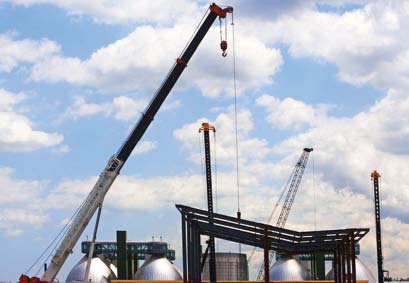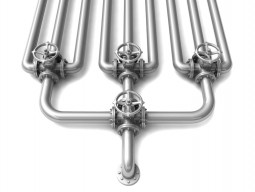
KARACHI:
For a long time our exports have been unable to move out of traditional areas like rice, textiles and leather and have also been unable to register exponential gains in numbers over the years. For over three decades now the growth in exports as a percentage of GDP has averaged about 12%.
These three traditional areas make up about 66% of Pakistan’s total exports. The strategy to expand exports by focusing on three main product ranges and not paying as much attention to expanding the range of products has not worked. The other reason our exports have failed to takeoff is because of the shift from manufacturing and agriculture to the services sector in recent years.

Source: Ministry of Finance, Economic Survey and Pakistan Bureau of Statistics
Our economy has been agro-based since the start and has also grown into a manufacturing-based economy. But the recent growth of the services sector, at the expense of, instead of along with manufacturing – has created an imbalance that has created structural flaws.
The report describes a strong services sector imposed on weak commodity producing sectors like someone with a bloated body trying to stand on weak legs. Such an economy can neither be strong nor stable.
The report calls for investment in agricultural infrastructure, particularly water management and soil conservation. It categorically states that manufacturing is the engine of growth and the source for exports and jobs and will remain so for the next two-three decades.
This is the path that should have been followed but the macroeconomic policy framework that has been followed over the last two decades has created an anti-industry bias. This policy has resulted in reduced absolute and relative profitability in manufacturing and raised absolute and relative profitability in alternative non-commodity producing sectors.
The sad result of this policy has been that now few investors are willing to choose manufacturing and usually opt for the large and easy profits to be made from trading in land, commodity and stock markets.
This has hit the pace of industrialisation and another factor that is responsible for this is unfair competition from imports and the surge of the non-commodity producing sectors.
Unfair competition from imports
The onslaught of imports began with the formal adoption of the neo-liberal policy framework in 1988 and consequential trade liberalisation in the early 1990s. The results have been devastating. A comparison of revenue receipts from customs duty and domestic indirect taxes – sales tax and central excise duty – shows that, from 1980 to 1993, the ratio of customs duty receipts and domestic indirect taxes receipts was 55:45. It was 50:50 in 1994 and declined to 20:80 by 2010. If the charge, earlier, was that imported goods did not enjoy a level playing field, now it is the domestic manufacturing sector that does not face a level playing field.

And deeper analysis of this escalation of the domestic tax burden shows that it has been accompanied by increases in other production costs, particularly energy, partly, due to the need to self-generate power at a significantly higher unit cost.
As if this was not enough, the recent 75% increase in electricity tariffs for the industry is akin to a death blow for the manufacturing sector. In an environment where there is already little investment interest in manufacturing, this is going to further slow down the flow of investment.
It is a basic thing that any business will be profitable as long as revenues exceed costs. An industrial unit will be profitable till the output price of its products exceeds its input (production) cost. However, with input costs rising faster than output prices, the industry has been rendered uncompetitive with respect to imports and with respect to competing non-manufacturing sectors.
A comparison of industrial cost and output prices, represented by wholesale price indices from 1980 shows that, for the period 1980 to 2000, the wholesale price index is higher – although slightly – than industrial cost index. From 2001, industrial cost has risen sharply compared to wholesale prices. Given this situation, it cannot be a matter of surprise that investors have tended to abandon the manufacturing sector for more lucrative alternative opportunities.
Essentially, the objective of collecting GST from manufacturing should be to document the economy and not to raise revenues to finance the non-development expenditures of the state. The government should not strangle this sector because it is unable to increase its tax base.
The report also stresses that given the importance of industrialisation in strengthening the economic base for sustained development and employment generation, the state’s withdrawal from the industrial development arena needs to be reversed.
This is particularly necessary in view of the failure of the private sector to invest in ventures where large capital outlays and higher levels of technical and managerial skills are required and where the payback period is longer and risks higher – relative to short-term investments in speculative trading.
Manufacturing is the goose that is laying the golden eggs – in terms of exports and jobs – and cannot be sacrificed at the altar of the state’s (and society’s) obsession with consumption.
Published in The Express Tribune, September 16th, 2013.
Like Business on Facebook, follow @TribuneBiz on Twitter to stay informed and join in the conversation.





























































COMMENTS
Comments are moderated and generally will be posted if they are on-topic and not abusive.
For more information, please see our Comments FAQ